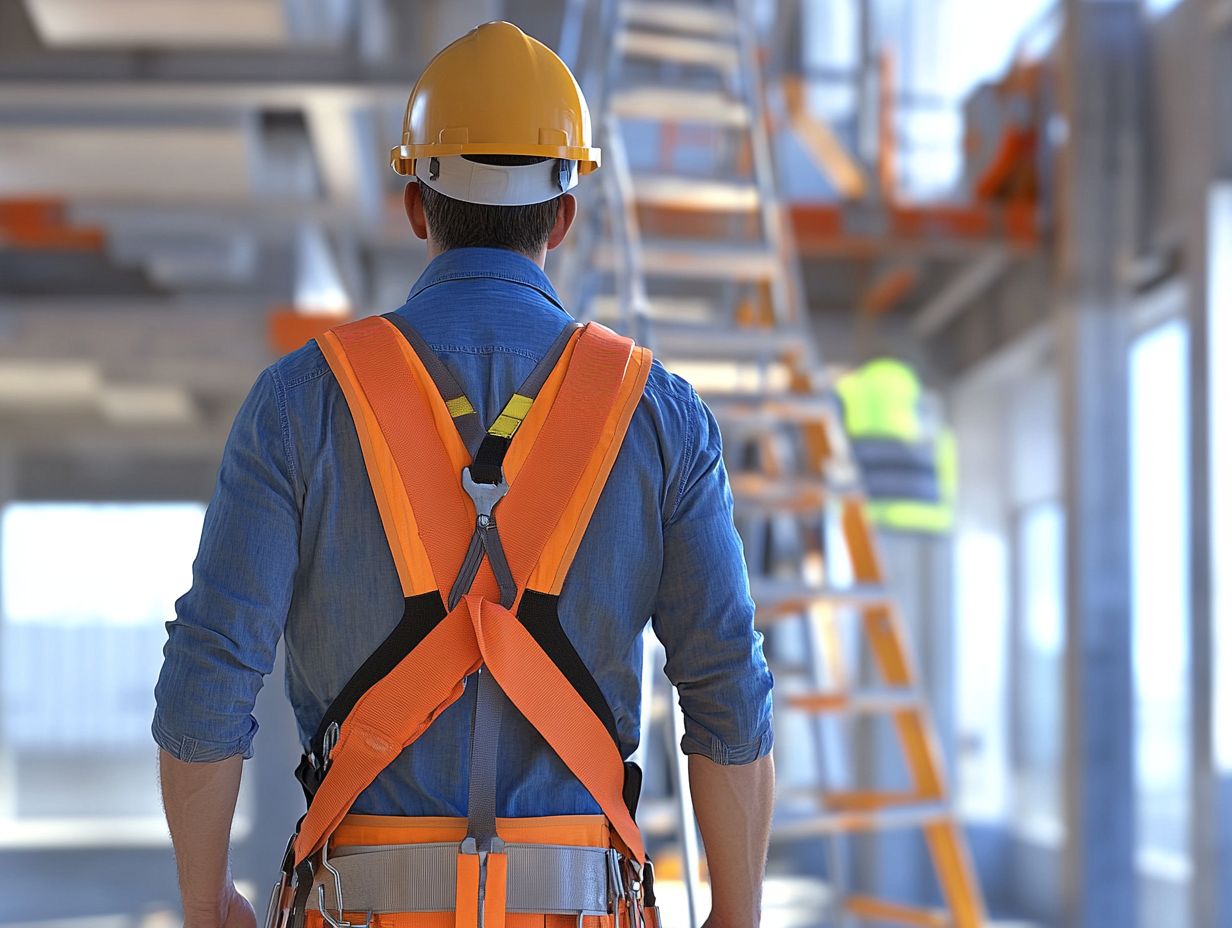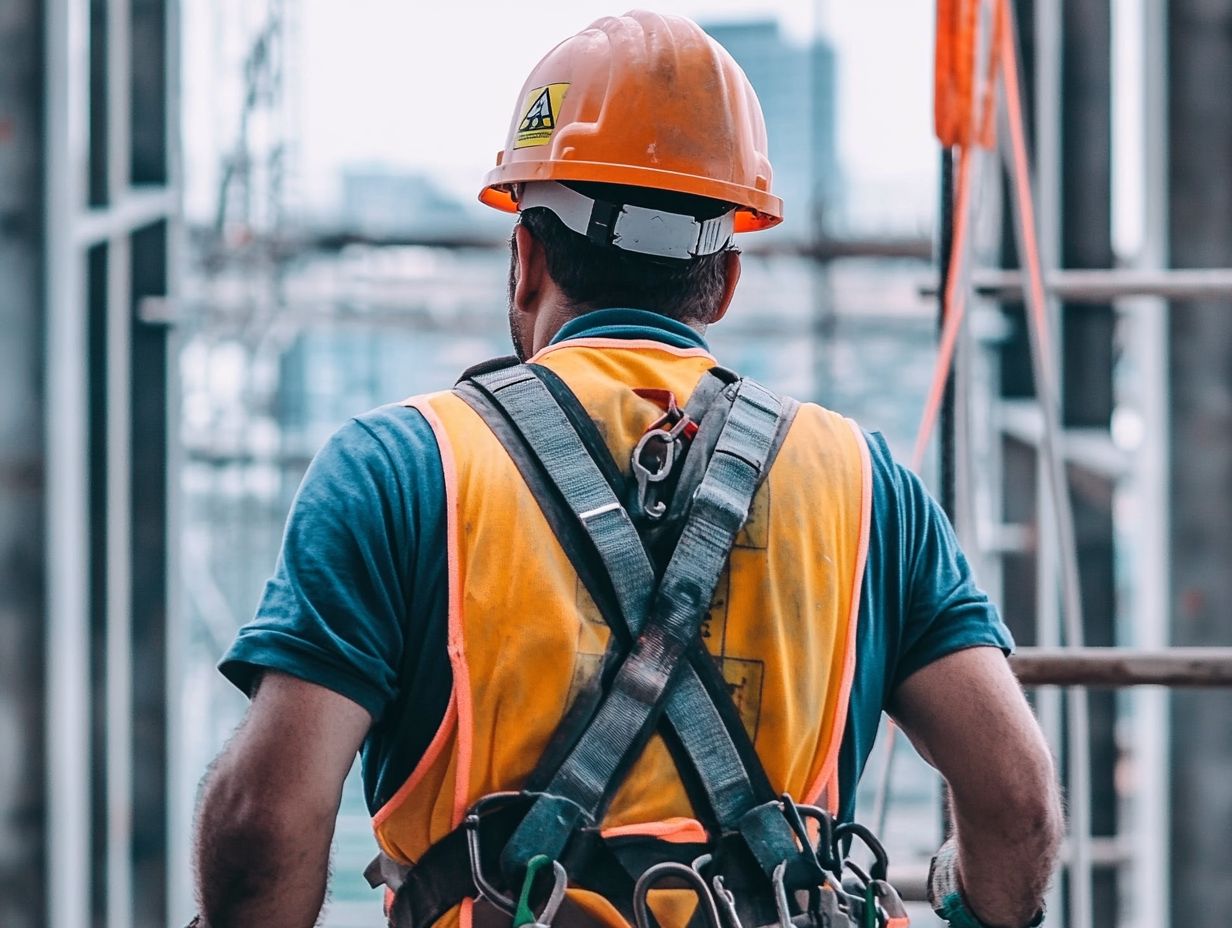Ladders are invaluable tools for both professionals and DIY enthusiasts, but improper use can lead to serious accidents.
Understanding ladder safety is crucial to protecting yourself while working at heights.
This guide highlights the importance of ladder safety, covers the different types of ladders and their proper uses, and offers essential tips on handling, inspecting, and storing them. It also points out common mistakes to avoid and provides safety guidelines for both professional settings and home projects.
By following these best practices, you can ensure a safer, more efficient climbing experience every time.
Understanding Ladder Safety

Understanding ladder safety is essential for ensuring safe practices, whether ladders are employed for do-it-yourself projects or in professional worksite environments. Proper usage of ladders significantly mitigates the risk of accidents and injuries related to falls, which represent a leading cause of workplace incidents.
Adhering to established ladder safety protocols, such as conducting regular safety inspections, ensuring appropriate ladder setup, and complying with OSHA regulations, is vital for maintaining a secure working environment. Furthermore, the implementation of effective climbing techniques and the utilization of safety equipment can further enhance ladder safety.
Why Ladder Safety is Important
Ladder safety is paramount in preventing accidents and injuries, particularly in environments where individuals frequently ascend to significant heights. By adhering to the ladder rules and regulations established by OSHA, workers can effectively minimize the risks associated with ladder usage. Implementing safety measures, such as ensuring the stability of the ladder and verifying that it adheres to the appropriate weight limit, is essential for both professionals and DIY enthusiasts.
Statistics indicate that ladder-related accidents constitute a considerable proportion of workplace injuries, underscoring the necessity for diligent safety practices. When workers recognize the significance of ladder safety, they foster a culture that prioritizes individual well-being and collective safety.
Simple yet effective strategies include:
- Inspecting the ladder for any damage before use
- Placing it on a stable surface
- Maintaining three points of contact while climbing
Correctly positioning ladders at the appropriate angle can significantly enhance stability. By adhering to these guidelines, not only can the risk of accidents be substantially reduced, but the overall safety environment within workplaces can also improve markedly.
Types of Ladders
Understanding the various types of ladders is essential for selecting the appropriate one for specific tasks, as each type possesses unique features and safety standards tailored to different applications.
For example, extension ladders are designed to provide vertical access to greater heights, while step ladders offer stability for tasks conducted at lower elevations.
Additionally, familiarity with ladder accessories, such as stabilizers and safety harnesses, significantly enhances both safety and usability.
Different Types and Their Uses
Different types of ladders serve distinct purposes and are specifically designed for various tasks, making it essential to select the appropriate ladder based on height and usage requirements.
For example, foldable ladders offer versatility, allowing users to configure them in multiple ways, which can be highly beneficial for a range of jobs. However, while they enhance functionality, their complexity may hinder ease of use for some individuals.
A platform ladder provides a stable workspace for tasks that require extended periods of standing; however, users should remain mindful of its weight and storage requirements.
Understanding these nuances not only enhances productivity but also significantly impacts safety. Selecting a ladder that meets the necessary height requirements minimizes the risk of accidents and ensures optimal performance in various environments.
Proper Handling and Storage

The proper handling and storage of ladders are essential elements of ladder maintenance that significantly impact safety and usability. Ensuring that ladders are correctly assembled prior to use, with secure footing and stable positioning, reduces the risk of accidents.
Furthermore, effective storage practices can extend the lifespan of a ladder and prevent deterioration. Implementing appropriate ladder handling techniques is also crucial for safeguarding against potential injuries.
Tips for Transporting and Storing Ladders
Transporting and storing ladders safely is imperative to ensure their longevity and the safety of users. Proper ladder setup during transport minimizes the risk of accidents, while secure storage away from environmental elements prevents damage and deterioration. Utilizing appropriate safety gear and adhering to recommended ladder handling techniques significantly enhances the management of ladders within any workspace.
When transporting ladders, it is highly advisable to employ high-quality straps to secure them firmly, thereby preventing any shifting during transit that could result in hazardous obstacles on the road. Storing ladders in a dry and designated area not only protects them from adverse weather conditions but also improves accessibility for future use.
Regular inspection of ladders for any signs of wear and tear is essential, and the use of safety gear such as helmets, harnesses, and non-slip footwear can further mitigate risks associated with ladder usage. Implementing these best practices fosters a safer work environment and extends the lifespan of essential equipment.
Inspecting Your Ladder
Regular ladder inspections are a critical component of ladder maintenance and are essential for ensuring compliance with safety standards.
A comprehensive ladder safety checklist should be utilized to assess the condition of the ladder, identifying potential hazards such as wear, damage, and issues related to structural integrity.
Implementing routine safety inspections not only complies with OSHA regulations but also promotes a culture of safety awareness within the workplace.
Key Areas to Check for Safety
When conducting an inspection of a ladder, it is imperative to evaluate several critical areas to ensure safety and functionality. The ladder safety checklist should encompass a thorough examination of the rungs, side rails, and locking mechanisms for any indications of wear or damage. Regular inspections of equipment not only prevent accidents but also serve as essential reminders for maintaining the integrity of the ladder.
Particular attention must be given to the rungs, which should be free from cracks, chips, or excessive wear that could result in slippage. The side rails must be inspected for any bends or corrosion that may jeopardize stability.
The locking mechanisms are of utmost importance; they should function smoothly and engage securely, ensuring that the ladder remains stable during use. Additionally, the feet of the ladder must provide sufficient grip to prevent slipping on various surfaces.
Neglecting these components can result in serious accidents, highlighting the critical need for diligent and routine inspections.
Using Ladders Safely

Utilizing ladders safely necessitates a thorough understanding of ladder usage guidelines and best practices designed to minimize the risk of accidents. Proper ladder setup is critical for effective climbing techniques that ensure user safety, and adherence to established safety tips can greatly enhance climbing stability and efficiency.
It is essential to implement appropriate ladder positioning while also maintaining awareness of potential hazards in the workspace to facilitate a secure climbing experience.
Best Practices for Climbing and Working on Ladders
Implementing best practices for ladder usage is essential for ensuring the safety of individuals working at various heights. Adhering to recommended climbing techniques and maintaining proper ladder positioning can significantly reduce the risks associated with falls. Adopting correct climbing posture and utilizing appropriate safety gear are fundamental components in enhancing ladder safety during operation.
A comprehensive understanding of ladder usage guidelines is paramount; this includes verifying the ladder’s stability and ensuring it is placed on a flat surface, clear of obstructions. Users should remain mindful of their body positioning while climbing, ensuring that their weight is centered and avoiding overreaching. The use of safety equipment, such as harnesses and non-slip footwear, can provide additional protection against slips and accidents.
By cultivating the practice of regularly inspecting both the ladder and safety equipment prior to use, individuals can promote a safer climbing environment, thereby minimizing the likelihood of injuries.
Common Ladder Safety Mistakes
Identifying common ladder safety mistakes is essential for preventing ladder-related accidents and enhancing overall safety. Many users tend to overlook key ladder safety guidelines, such as proper positioning and load capacity, which significantly increases the risks associated with climbing activities.
By recognizing and addressing these mistakes, individuals can effectively implement strategies for accident prevention and foster a safer environment when utilizing ladders.
Avoiding and Correcting Common Errors
Avoiding and rectifying common errors in ladder usage is essential for maintaining safety and preventing accidents. Utilizing a ladder safety checklist can serve as an invaluable tool for identifying and addressing mistakes in ladder handling techniques and compliance with established ladder protocols. Conducting regular risk assessments enables users to adopt a proactive approach to ladder safety, thereby reinforcing the significance of consistent safety reminders.
Recognizing the potential hazards associated with ladder use is crucial for ensuring a secure working environment. One effective strategy is to provide training on proper ladder placement, highlighting the importance of a stable, level surface and the correct angle for support. Inspecting ladders prior to each use is essential to identify any damages that could lead to malfunctions. Furthermore, it is imperative for users to understand the limitations of their ladders, including weight capacities, to prevent overloading.
By consistently applying these techniques and fostering a culture of safety awareness, organizations can significantly reduce the likelihood of incidents related to ladder use.
Ladder Safety for Professionals

Ladder safety for professionals necessitates strict adherence to established safety protocols and regulations to ensure a safe worksite. A comprehensive understanding of the nuances of ladder training and compliance with OSHA regulations is essential for mitigating risks associated with climbing and working at heights.
Conducting regular safety audits and evaluations of ladder usage will enable organizations to maintain high standards of safety within professional environments.
Specific Guidelines for Worksite Safety
Adhering to specific guidelines for worksite safety is crucial for minimizing risks associated with ladder use in professional environments. Ladder training courses provide workers with essential knowledge to ensure compliance with ladder safety standards and the effective utilization of safety equipment. Establishing protocols for incident reporting is vital, as it ensures that potential hazards are addressed promptly, thereby contributing to a safer work environment.
Along with training, employers must provide appropriate safety devices, such as harnesses and stabilizing equipment, which significantly enhance the safety of ladder operations. Regular inspections of ladders for defects and issues serve to further mitigate risks. Additionally, promoting a culture of safety awareness among employees is equally important.
Workers should be encouraged to report any unsafe conditions without fear of retribution, fostering an environment where safety is prioritized above all else. Compliance with industry regulations not only protects workers but also upholds organizational integrity and reinforces a commitment to maintaining high safety standards on the job site.
Ladder Safety for DIYers
Ladder safety for DIY enthusiasts requires a thorough understanding of essential safety tips and practices that are critical for effective and secure ladder usage during home projects. Ensuring proper organization of the workspace and utilizing personal protective equipment can significantly reduce the risks associated with ladder use, enabling DIY practitioners to undertake projects with confidence.
The implementation of fundamental ladder safety measures is imperative for preventing accidents and ensuring that tasks are completed efficiently.
Important Tips for Home Use
For individuals engaged in do-it-yourself projects, adhering to essential guidelines for the safe use of ladders can significantly enhance safety and minimize the risk of accidents. Implementing effective climbing techniques, ensuring proper ladder positioning, and adhering to safety reminders are critical practices for fostering a secure and efficient working environment. By understanding and applying these guidelines, individuals can successfully complete DIY projects while prioritizing ladder safety.
When utilizing a ladder, it is imperative for individuals to conduct a thorough inspection of the equipment prior to use, checking for any signs of wear or damage that may compromise stability. Ensuring that the ladder is placed on a flat, stable surface and extended to the appropriate height is essential for maintaining balance during work.
For those who frequently handle heavier tools or materials, keeping these items within reach reduces the inclination to overreach, thereby decreasing the risk of falls. Additionally, employing a spotter can provide extra assurance, as they can help stabilize the ladder and assist with any necessary adjustments while allowing the user to maintain focus on the task at hand.


